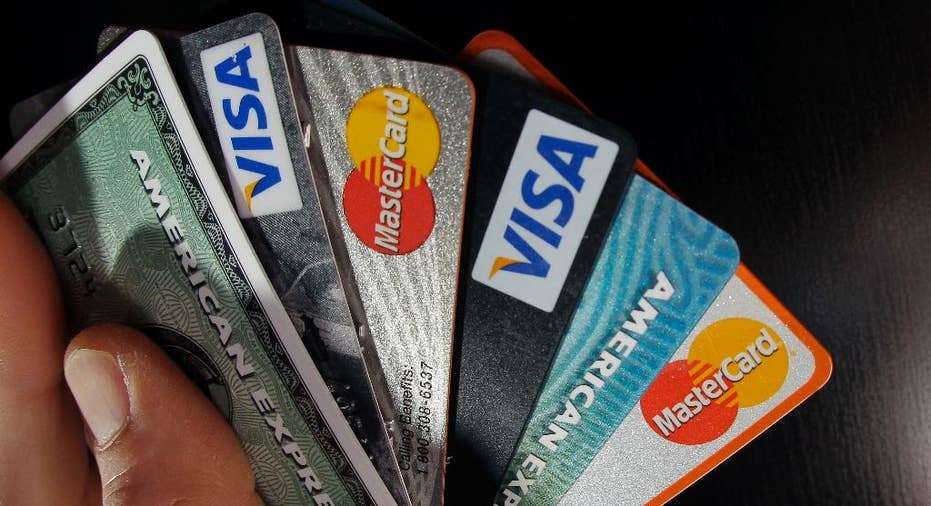Your next credit card: What a good offer looks like

Today's competitive credit card market has turned lucrative for consumers, meaning what would have been a good offer just a few years ago no longer measures up.
For example, 1 percent cash back for credit card spending is no longer competitive. Zero-percent interest for a year may sound generous, but today it's lackluster. The best offers include sign-up bonuses, rewards and no-interest deals to manage your debt. Many cards have no annual fee, but if you pay one, you should expect superior rewards.
Each credit card issuer is trying to create a mix of benefits that attracts customers they value most — those who pay their bills on time and spend a lot, says Robert Hammer, founder and chairman of R.K. Hammer, a credit card industry consulting and research firm.
"There are so many more choices today than ever before. There's almost a product for every credit score," Hammer says.
Still, just because a card offer comes in the mail, runs entertaining TV ads or is pushed by your bank doesn't mean it's a wise choice. Here's what a good deal looks like for three basic types of cards, assuming you have good credit.
CASH REWARDS CARDS
Many rewards cards offer 2 percent to 5 percent cash back on specific categories of spending, such as gas, dining out or travel, while paying just 1 percent on everything else. But some programs can be complicated, especially those with rotating bonus categories. Simpler, and potentially more lucrative in the long run, is a flat-rate cash-back card. You get the same rewards rate regardless of what you're paying for, whether it's a book on Amazon.com or an insurance copay at your doctor's office.
Benchmarks to look for:
— At least 1.5 percent cash back on everything. If you charge $1,000 per month on your card, you'll get $60 more cash back per year than you would with a 1 percent card.
— No annual fee. Exceptions: If you want outsized rewards or have only an average credit score, you might have to pay a fee.
Power user tip: If you're willing to add complexity, combine a flat-rate card with one that offers bonus cash back in certain categories. Then use whichever pays the higher rate for a given purchase.
DEBT MANAGEMENT CARDS
Many credit cards offer no-interest periods on balance transfers and even new purchases. If you carry a hefty balance and need breathing room to pay down that debt without finance charges, this is the type of card to explore.
Benchmarks to look for:
— At least 15 months of no interest. Cards that offer a year at zero percent are no longer competitive, with dozens offering 15, 18 or even 21 months.
— Balance transfer fee of no more than 3 percent of the amount transferred. A few cards don't charge a fee to transfer balances, but most do.
— No annual fee.
— Interest rate under 15 percent. Credit card rates vary widely depending on your creditworthiness and prevailing rates. But if you have excellent credit, look for an ongoing rate — after a 0 percent period — as low as 11 percent. At credit unions, you might find a rate under 10 percent.
TRAVEL REWARDS CARDS
Travel cards often have annual fees and large sign-up bonuses. Some are hard to evaluate because their rewards programs are complicated and they offer perks that mean more to some people than to others, such as airport lounge access or free checked bags.
Benchmarks to look for:
— No foreign transaction fee. Paying no surcharge for purchases abroad should be standard for a travel card.
— Sign-up bonus worth at least $200, after subtracting the annual fee. Miles or points bonuses vary from 20,000 to 100,000. When in doubt, value miles or points at a penny each, though actual values vary depending on what you redeem them for. Currently, the average bonus for a miles card is more than $425, according to NerdWallet data.
— Benefits that offset the annual fee. Many travel rewards cards have an annual fee, some as high as $450. Some issuers waive the fee for the first year, giving you a chance to try the card for free. The key is to reap more value from the card than you pay in annual fees. The sign-up bonus plus any perks with obvious cash value, such as reimbursement for travel expenses, should pay for at least three years of the card's annual fee.
Of course, some decent cards will be exceptions to these guidelines. Just make sure they have good reasons for falling short and provide other benefits instead.
_______
This article was provided to The Associated Press by the personal finance website NerdWallet. Email staff writer Gregory Karp: gkarp@nerdwallet.com . Twitter: @spendingsmart
RELATED LINKS:
NerdWallet: What is the range for credit scores? http://bit.ly/2h5Xt4O
R.K. Hammer Inc.: http://rkhammer.com/



















